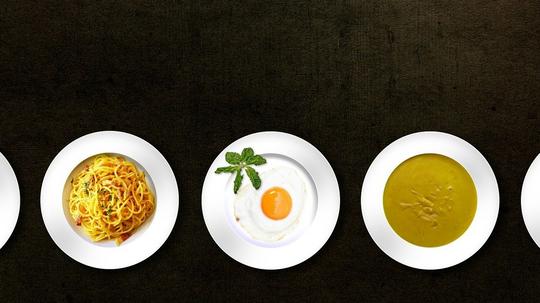
Before the coronavirus upended the food service industry, GoTab was a humble startup making it easier for customers inside a restaurant or bar to place an order for their table. Users would simply scan a QR code with their phones, order and pay—without having to flag down waitstaff, and without downloading an app.
But protective measures to slow the spread of the pandemic grew stricter and stricter. Soon enough, no one was dining in restaurants or sitting in bars in D.C., nor much of the rest of the country. With the utility of GoTab’s main feature out the window, the Arlington-based startup had to adapt to the new normal.
As restaurants are forced to operate in a takeout or delivery-only capacity, and with social distancing making transactions difficult, GoTab has found a niche in facilitating contactless ordering and payment of customers still patronizing local businesses.
“You can basically place all your orders on your phone, and they can be brought to you with clean, sterilized hands. And then you're not really passing credit cards. You're not really doing any of those things,” GoTab founder and CEO Tim McLaughlin told DC Inno. “There's no shared point of sale terminal for the staff. So they're also not touching shared things between each other. The sanitation was never a designed intent feature of our product, but it’s just how it works."
As for GoTab’s delivery feature, it didn’t exist before the strict social distancing guidelines. It was a capability that the company was working on and planned to release later this year. When D.C. restaurants were ordered to close their dining rooms on March 16, GoTab decided to push it out early. Delivery was online by the end of the next week, McLaughlin said.
Coronavirus aside, McLaughlin hopes that GoTab’s delivery feature will rival that of gig-based apps like UberEats and DoorDash. Delivery with GoTab relies on the restaurants to provide their own drivers, which allows the businesses to avoid the large commission (typically between 10 and 30 percent) that the other apps take out of a sale.
Amid the pandemic, GoTab has been waiving its usual $600 fee to activate the suite of services. Beyond that, the cost to restaurants is typically around 1 percent of the sales cost, McLaughlin said, at least for single-location restaurants. Larger restaurant groups with multiple locations—like ThinkFoodGroup and Farmers Restaurant Group, which have been using GoTa heavily, according to Washingtonian—will have some extra fees in order to use the service’s enterprise feature.
Despite the price reduction for many new customers, GoTab’s revenue has shot up, McLaughlin said. He claims the company’s revenue increased fivefold within two weeks.
“Realize, we're a digital only system, meaning that we're all online all the time. And obviously, even though the restaurant business has gone down, their percentage of e-commerce transactions has gone up to pretty much 100 percent,” McLaughlin said. That’s despite the fact that retail and food service sales dropped nationally by 8.7 percent from February to March, according to the U.S. Census Bureau.
As for businesses that rely heavily on dine-in, McLaughlin says GoTab hasn’t lost those customers since GoTab doesn’t cost them anything while they’re not using it, as opposed to many traditional point-of-sale systems.
Still, as a startup, GoTab took some precautionary cost-cutting measures when the coronavirus’s economic damage started to become clear. From the 23-person team, GoTab had to let go one contractor and one employee focused on on-premise support. Additionally, the senior executive team of four people took voluntary pay cuts.
“Not that we're getting paid well anyway—we're a startup—but we did what we could to reduce our operational costs. But we already operate pretty darn lean,” McLaughlin said.
That’s not to say hiring has stopped. GoTab is looking to grow its headcount with more team members in development, customer service, graphic design and operations roles.
Despite the momentary rearrangement of GoTab’s business model, McLaughlin still sees a future where the company’s primary focus is on-premise ordering, the capability that launched the startup.
“Once we get past this, we still think there's a time and a place to go out to places. And I'm sure everybody right now is starting to get tired of sitting at home all the time,” McLaughlin said. “The technology works in both situations. It's the same technology.”




